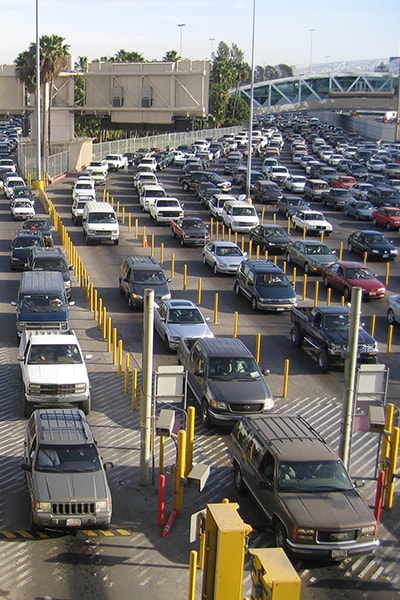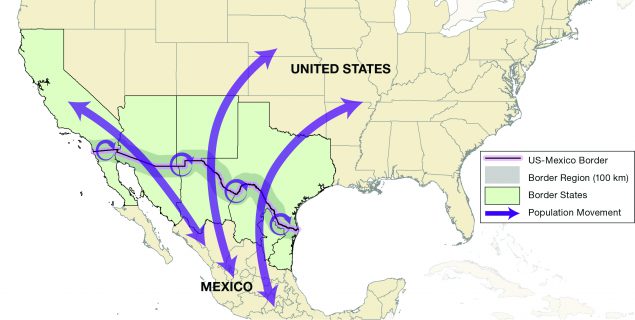Southern Border Health and Migration
Who We Are

Cars crossing the United States-Mexico land border. Image courtesy Maureen Fonseca-Ford.
The Division of Global Migration Health Southern Border Health and Migration Branch (SBHMB) facilitates collaboration between the United States and Mexico to protect the health of binational populations. The United States and Mexico share a land border of nearly 2,000 miles. Each year, more than 150 million people cross the land border to live, work, study, and visit. Infectious diseases such as Zika, tuberculosis, influenza, and measles affect both countries.
What We Do
SBHMB works with Mexico’s Secretariat of Health on public health issues of mutual concern affecting the border region and people moving between both countries. Issues include:
- Infectious disease outbreaks
- Diseases associated with product importation and distribution
- Identification and referral of people with suspected and confirmed infectious conditions traveling between countries
Where We Work
SBHMB manages CDC Port Health Stations in El Paso, TX, and San Diego, CA, which are responsible for sea, air, and land ports of entry in the border regions of Arizona, California, New Mexico, and Texas. US Port Health Stations are parts of a comprehensive quarantine system that serves to limit the introduction of infectious diseases into the United States and to prevent their spread.

How We Work Together
SBHMB partners with other US federal agencies, as well as local and state health departments, for preparedness activities at US points of entry.
Public health officials and partner agencies are SBHMB’s eyes and ears on the ground to detect, notify, and investigate reports of communicable disease cases in the border region.
SBHMB works to strengthen surveillance and laboratory capacity in the border regions and in Mexico. Binational collaboration improves our ability to identify pathogens, follow disease trends, and identify outbreaks.
Program in Action

- Disease Surveillance: SBHMB coordinates the Binational Border Infectious Disease Surveillance (BIDS) program to improve disease prevention in the border region. The BIDS network has helped identify H1N1 influenza, dengue, rickettsia, measles, hepatitis A, rubella, and foodborne outbreaks.
- CureTB: The CureTB program works with health authorities across borders to assist in linking patients with tuberculosis to care as they move between countries.
- Latino Migrant Health: SBHMB works to enhance scientific evidence and awareness on health disparities affecting Latino migrants in the United States and effective interventions to address them. SBHMB also specializes in outreach and health education approaches for Spanish-speaking and mobile populations.
- Visit the Southern Border Health and Migration Branch site.